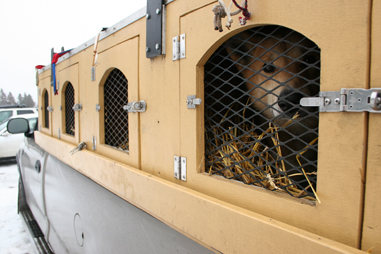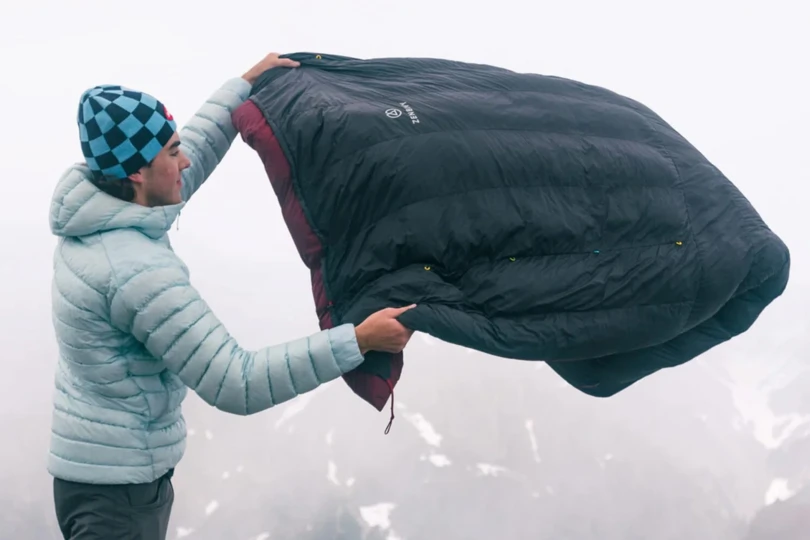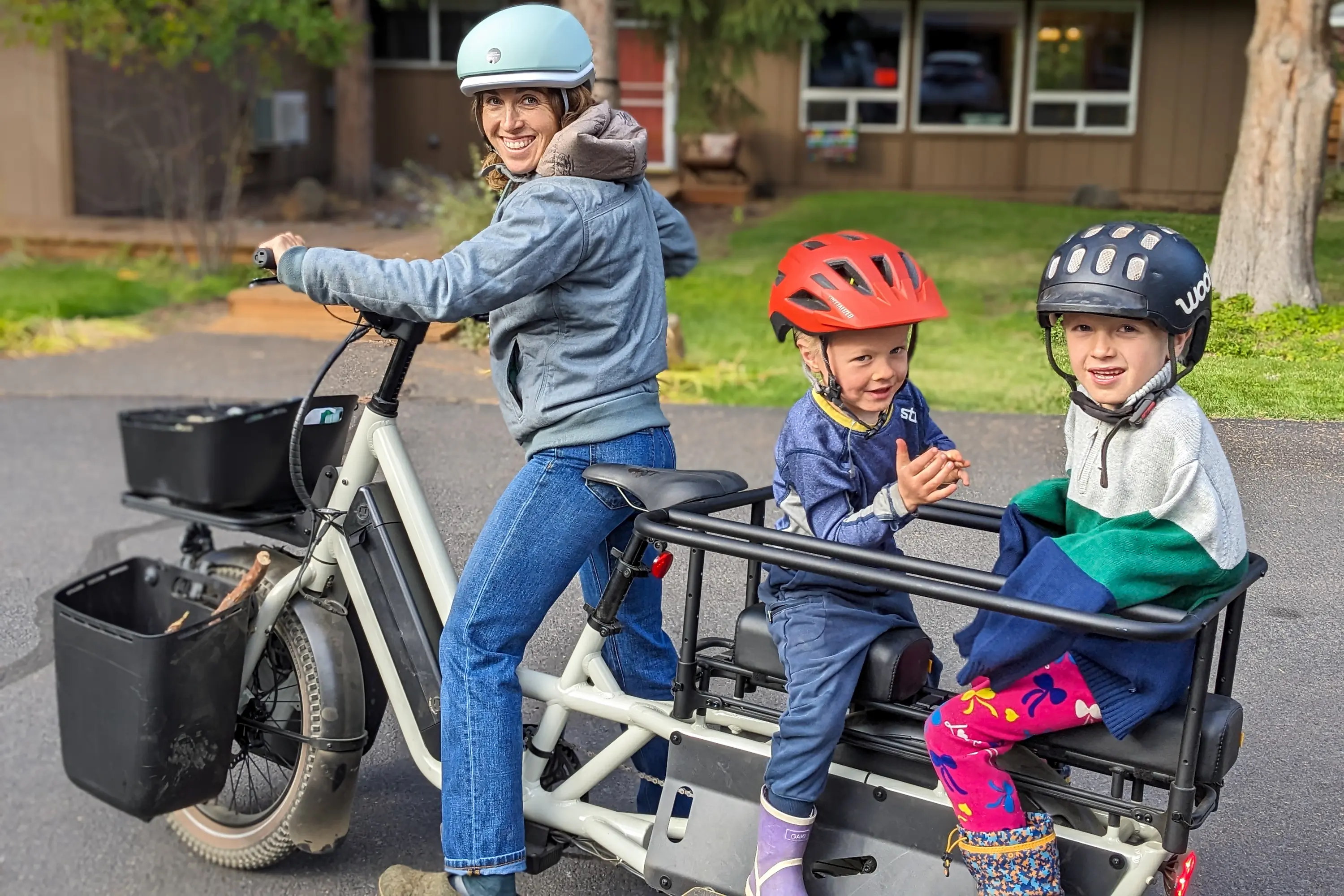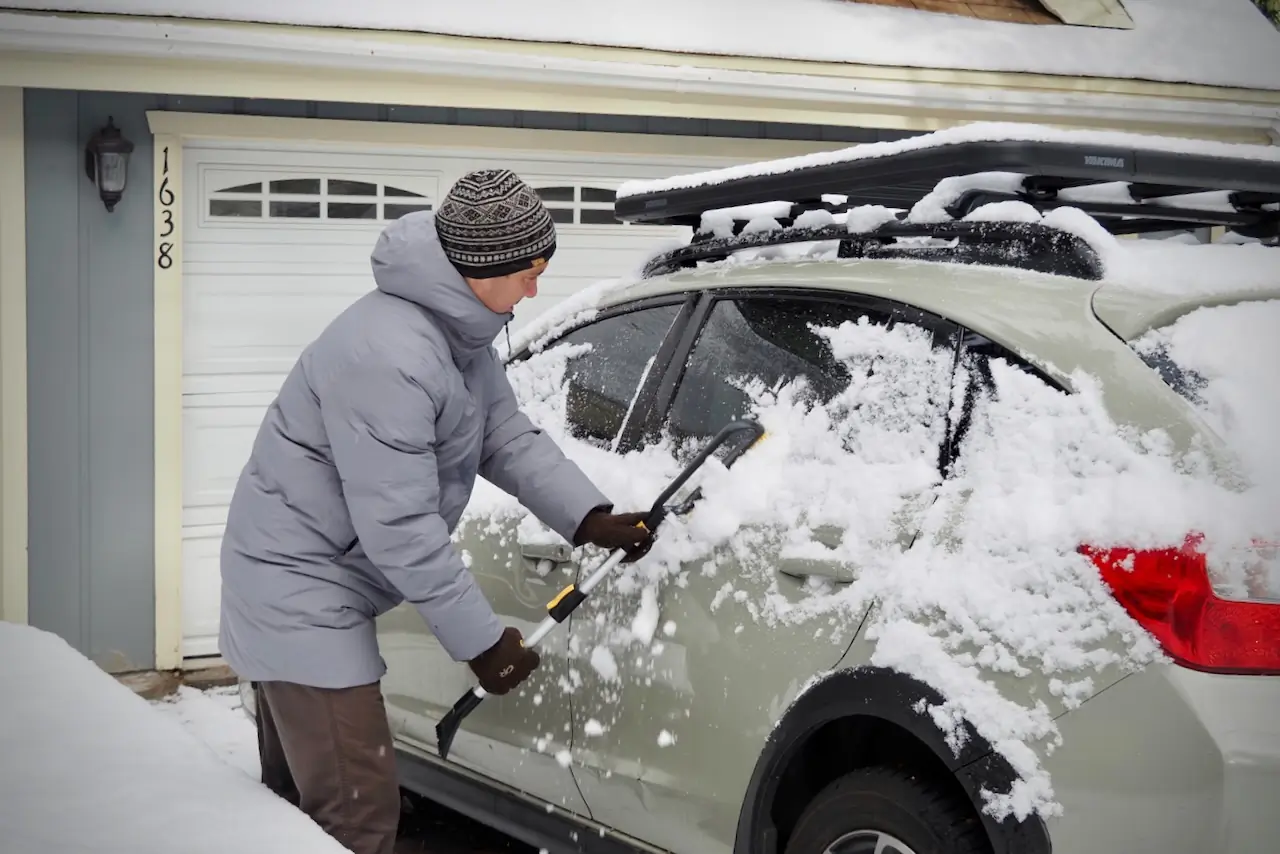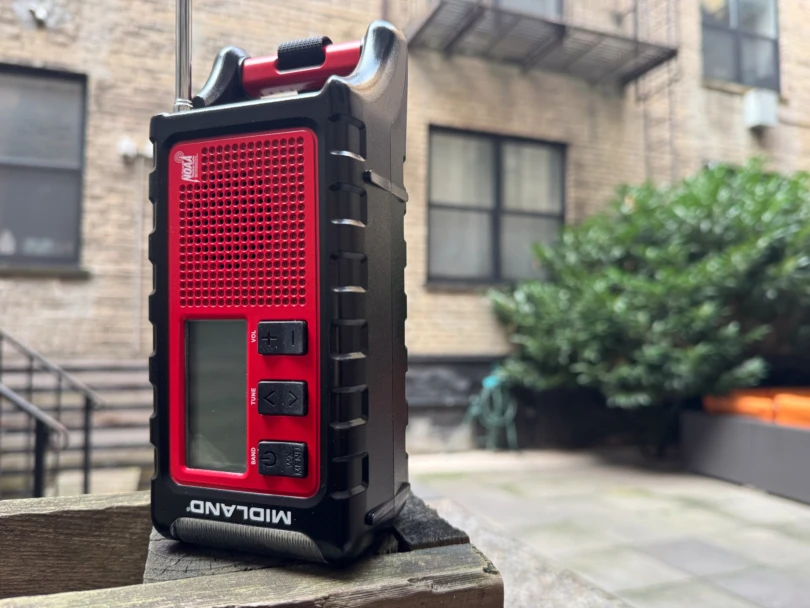Dog Power: Skijoring for Speed
By STEPHEN REGENOLD
published March 04, 2008
It’s one degree below zero, a pale morning sky pitched over a barren field. A dozen dogs are yipping and twirling on a ski trail near a parking lot. I’m gearing up with the Midwest Skijorers Club for a session at Bunker Hills Regional Park in Andover, Minn., where 12 kilometers of rolling trail has been set aside for the dog-powered sport of skijoring.
“Line out!” a bundled skier yells, his dog perked up and waiting to run. “Hike, let’s go, let’s go!”
And they’re off, an explosion of snow and ice, poles pushing, skis skating, a harnessed husky leaping ahead, pulling the line tight to run away with skier in tow.

This is skijoring, a cousin sport to dog sledding where Nordic skis, harnesses, and a short length of bungee cord form a system that can power interspecies teams to speeds heretofore unseen on flat snow. The premise is simple: The dog runs and pulls, and the human skis behind, borrowing off the canine thrust while also striding and skating to contribute to the team’s momentum for flying down the trail.
Skijoring is a long-practiced Nordic technique, a mode of wintertime transport that evolved into sport a century ago. But the activity has gained popularity in recent years as everyday skiers see the potential in their pets. Indeed, you don’t need an Arctic sled dog to skijor. According to Jim Benson, president of the 100-member Midwest Skijorers Club, any healthy dog that weighs 35 pounds or more is candidate for the sport.
“We have labs, border collies, retrievers and giant schnauzers in the club,” Benson said. “It’s a great way to exercise the family pet.”
My pet—a 90-pound Weimaraner named Rodney—is a perfect example: Rodney is five years old, energetic and still a puppy at heart. For exercise, he needs to run every day, and he loves to pull. Dress him in a harness, clip in to skis, and—BAM!—you are flying.

At Bunker Hills park, where the trail dips and rolls through a prairie near a golf course, Rodney and I did three laps in an hour’s time. A padded harness on my waist, plus the tow line’s elasticity, cushioned and absorbed the dog-human connection as we ran.
The nomenclature of skijoring includes a dozen dog commands to keep your canine on track, with the term “Hike!” standing in as a signal for the dog to start up and go. “Gee” means turn right; “Haw” is go left.
Rodney is still learning the language, though he took easily to the sport’s primary premise: Run straight and pull hard.
“Hike! OK, let’s go!” I yelled. Rodney barked and leapt forward, claws digging into the groomed trail. I stood up to find my balance, then started skating and pushing off with my poles.
We skijor a few times each winter, so Rodney remembered the drill. He lunged and galloped, straining at the line on the uphills, then running free as the line went slack going down. Ice pellets shot back from under his paws. His tongue flapped in the breeze.
Once momentum takes over, skijoring is of little difficulty for a large dog like Rodney. Waxed skis gliding on snow provide an optimal vehicle to pull human weight through the winter woods.

“It feels like you’re downhill skiing,” said Ethan Hagenbuch, a first-timer at the Bunker Hills event. Hagenbuch, a furniture designer, was paired with one of Benson’s Alaskan huskies for his introductory ride. “It was just blistering fast,” he said.
Speed is a No. 1 draw. A seasoned skijoring dog can pull consistently at 15 miles per hour or faster, letting skiers tick off twice as many miles as on a dog-less day. Races each winter at events such as the City of Lakes Loppet in Minneapolis see competitors like Benson tethered to two or three trained huskies at a time, skidding through turns, yelling commands, skating and poling behind beasts bred to run.
Benson, a veteran skijorer who travels to compete, trains his dogs year-round, on and off the snow. He has a pickup truck with a built-in kennel. At races he bates big buckets of water with canned dog food, stirring in spoonfuls of glop to flavor a slurry the dogs will drink. “Keeps them hydrated,” Benson said. “Makes them run faster.”
Most skijorers fit more the mold of Carin Offerman, an independent investor from Minneapolis who runs Raven, her 70-pound giant schnauzer, for exercise and enjoyment alone. “I do the races, but just for fun,” she said. Raven and Offerman picked up the sport six years ago to stay in shape over the winter months. “We were both in need of more exercise.”

Now Raven is fit and fast on the snow, pulling for four miles easily. Like most skijor dogs, he leaps and yelps at the sight of snow. Discipline kicks in when Offerman starts with the commands: “Raven, get ready. . . Hike!”
The explosion of power that is a dog running with purpose can be startlingly abrupt. Four legs cranking on snow, claws scraping to grip, generates a burst of energy akin to a motor. Harness this power—literally—and you can sail for miles over the snow.
Rodney and I ticked off five miles before little ice beards began to form on his face. The air was stiff, a cheek-stinging chill that gave cold headaches and froze fingers. I put Rodney in the car to warm up.
But soon he was howling, nosing at the window and whining to get back into the woods. The call of the wild.
I hooked him up and clicked back into the skis. “Hike!” I said, the line going tight. “Let’s run!”
(Stephen Regenold writes The Gear Junkie column for eleven U.S. newspapers; see www.THEGEARJUNKIE.com for video gear reviews, a daily blog, and an archive of Regenold’s work.)
SKIJORING COMMANDS
• Line Out/Out Front = Get Ready but Wait
• Hike/Let’s Go = Start Running/Pull
• Easy = Slow Down
• On-By = Continue past any distraction
• Gee = Turn Right
• Haw = Turn Left
• Whoa = Stop
• Come around = Turn around
